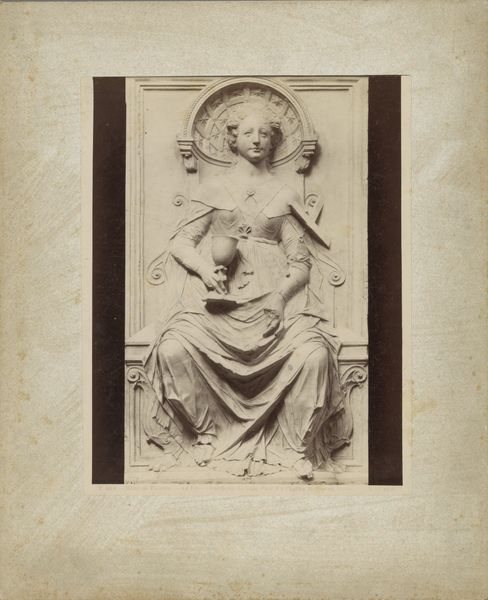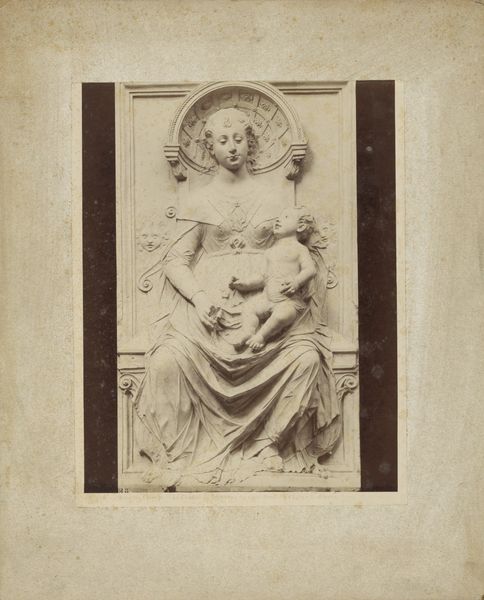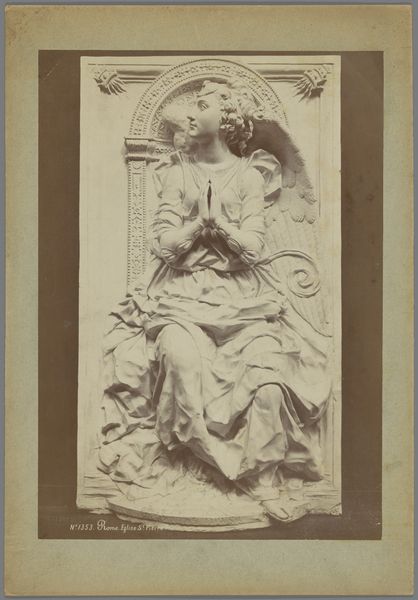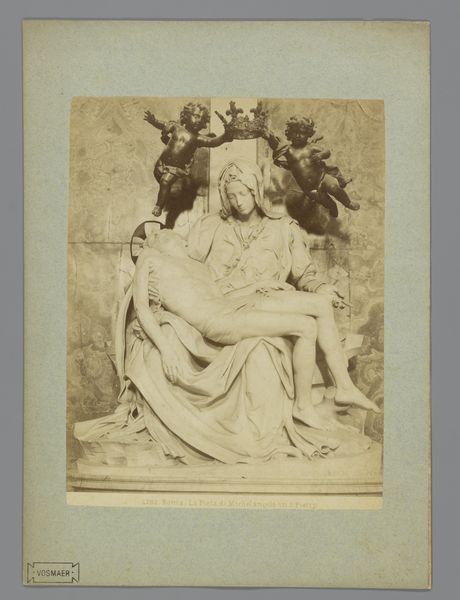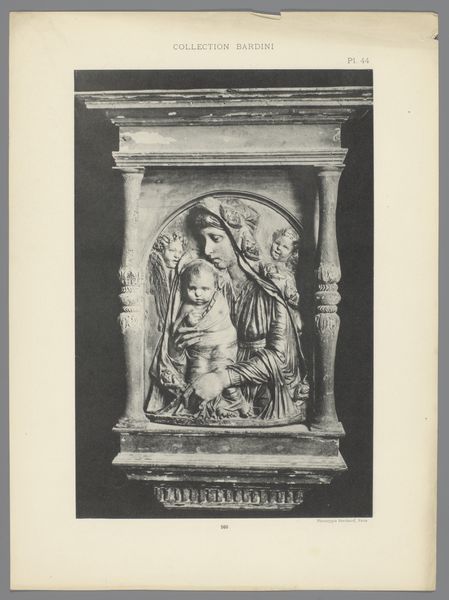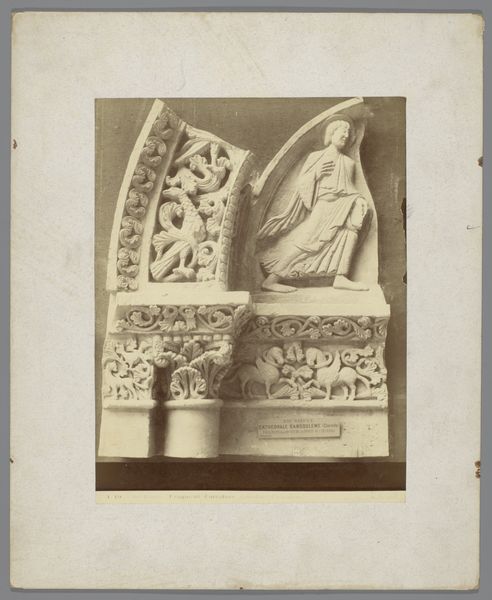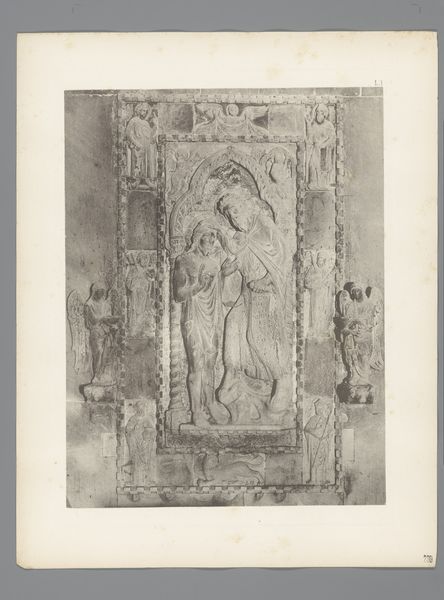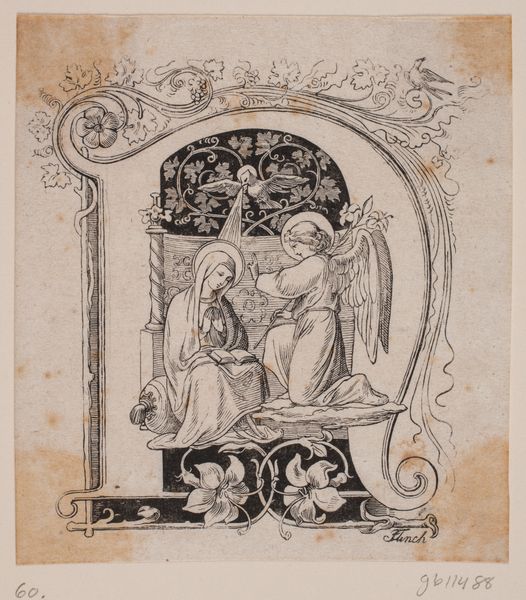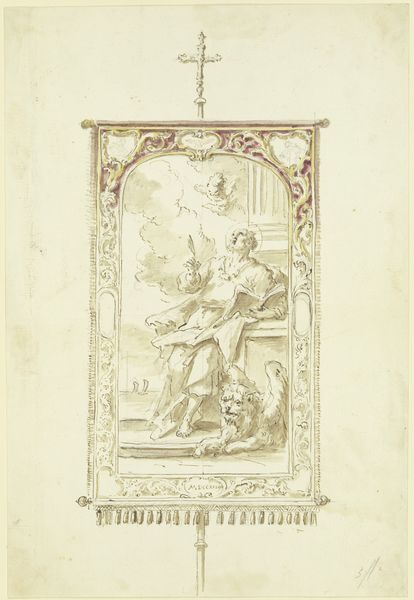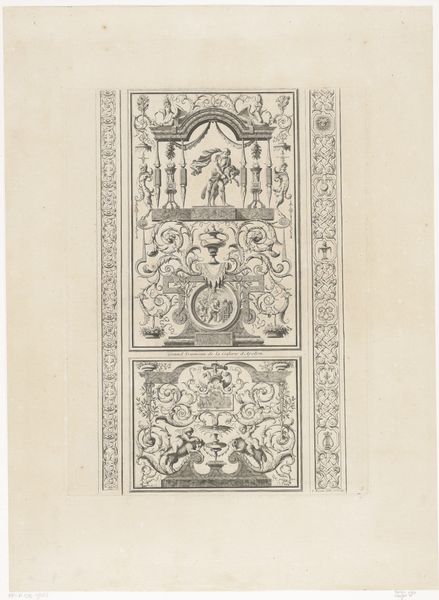
sculpture
#
pencil drawn
#
aged paper
#
toned paper
#
light pencil work
#
pencil sketch
#
old engraving style
#
charcoal drawing
#
pencil drawing
#
sculpture
#
19th century
#
watercolor
Dimensions: height 370 mm, width 303 mm
Copyright: Rijks Museum: Open Domain
Curator: Looking at this work, I’m immediately struck by the sense of profound stillness and contemplation. There’s a real gravitas in the composition. Editor: I concur. We're observing an impression taken between 1850 and 1900, of what’s thought to be a plaster cast of a sculpture by Mino de Fiesole, likely extracted from a funerary monument. The choice of monochrome, with its faded tonality, truly reinforces that sense of bygone eras. Curator: Absolutely. Angels, as depicted in art across cultures, act as intermediaries. What's interesting here is the angel's posture. Clasped hands and an upward gaze. It communicates reverence, but also longing. What’s the significance of placing this figure on a tomb, you think? Editor: Funerary art serves several purposes, one of which is comforting the bereaved, offering a potent narrative on grief. During the Renaissance, angelic figures symbolized immortality. The presence of the angel in prayer perhaps encourages empathy: viewers are encouraged to accept the angel’s own hopes for the departed. There’s a subtle call to action, a summons to remember our own morality. Curator: Yes, and look closer: even within the rigid rectangular form, the soft curls of the hair, the drapery’s fluid folds, the gentle tilt of the head... There is an overwhelming humanity and fragility that counters its religious symbolism. The artist is channeling specific concepts of grief during that time, but how does it translate now? Editor: I'd suggest that our culture largely disavows expressions of profound lament, tending instead towards what some critics have called a culture of "toxic positivity". Consequently, we might be somewhat estranged from the profound grief that the sculpture evokes. Nevertheless, even in secular settings, most can identify with the universality of mortality and yearning that’s rendered through these visual and culturally entrenched conventions. The visual weight of its religious symbols ensures that its meaning remains unchanged, although it can evoke more varied interpretations from modern viewers. Curator: This angel feels strangely hopeful. I suspect that hope, and those artistic devices, will carry meaning for a long time. Editor: Agreed. There's a lingering dialogue with both the artist and the departed, etched in plaster and light. The image compels you to contemplate time and loss in a particularly potent way.
Comments
No comments
Be the first to comment and join the conversation on the ultimate creative platform.
